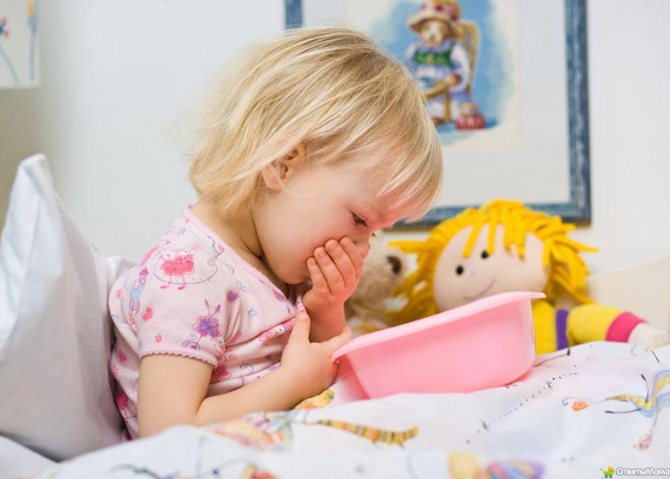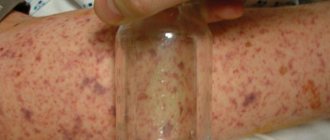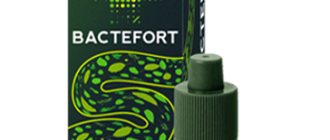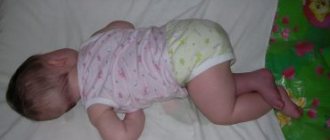Why does a child vomit bile?
The main reason is the entry of bile into the stomach, which is trying to get rid of the liquid that irritates it naturally. There may be several explanations for how this biological substance, which should be in the gallbladder, ends up in a completely different organ:
- intestinal infection;
- exacerbation of appendicitis;
- biliary or renal colic;
- severe poisoning;
- thrombosis of intestinal vessels;
- narrowing of the upper gastrointestinal tract.
In infancy
All of the above pathologies are rare in infants. Mothers of newborns can also sometimes observe yellow mucus in regurgitated sputum or full-blown vomiting.
Vomiting in infants indicates a congenital pathology of the bile ducts or that the baby, while moving along the birth canal, could have swallowed amniotic fluid or experienced a lack of oxygen.
In children from one year old and teenagers
Yellow or green vomiting in a child frightens parents no matter how old he is, and this unpleasant and dangerous phenomenon can occur at any age. A teenager may burp once or vomit bile due to overeating fatty foods. When vomiting recurs systematically, the child should be examined for pancreatitis, intestinal obstruction and diverticulosis. This will allow you to accurately diagnose the disease.
Sometimes bile in vomit is a reaction to drinking alcohol or cigarettes for the first time in your life . This is how the gallbladder reacts to unfamiliar toxins, throwing part of the mass it produces into the stomach.
Types of vomiting in a child
Vomiting is a signal of problems with the functioning of the stomach. Coordinates nausea with the central nervous system. Based on the nature of occurrence, the following types of vomiting in children are distinguished:
- Regurgitation in a baby. Eruption of a small amount of food after feeding.
- Reflex. It can be observed with acute pain in the abdomen, metabolic disorders in the body, severe cough, inflammatory processes in the ears (otitis media), etc.
- Spasmodic (uncontrollable vomiting). May occur in case of poisoning, with congenital or acquired malformations of the gastrointestinal tract. This type is dangerous due to rapid dehydration of the child’s body. If excessive vomiting occurs, call an ambulance immediately.
- Psychogenic in nature. Occurs with increased excitability of the central nervous system. This type of nausea is provoked by stressful situations, anxiety, emotional experiences, and mental disorders in a child.
- Atonic vomiting. Characterized by weak gastric eruptions and sluggish flow of food. It is observed due to decreased muscle tone of the stomach walls.
To determine the cause of vomiting, you must undergo a medical examination. After diagnosis, begin treatment. Diagnostic methods include: visual examination, interviewing adults to determine the possible cause, laboratory tests of blood, urine, and feces. To confirm the diagnosis, ultrasound, MRI, and FGDS may be prescribed.
First aid
When a child vomits bile with fever or other accompanying symptoms, you should immediately call an ambulance. While she is driving, first aid measures should be taken to ease the baby’s suffering and prevent the development of complications.
First, place the child in such a way that he cannot choke on the vomit. This should be a semi-medical position with several pillows under your head. The baby must be held in your arms or not leave the crib so that during the next attack you can immediately turn him over, allowing the vomit to come out.
As soon as your child vomits bile, rinse his mouth and then give him water, otherwise he may become dehydrated. Additionally, you can give enterosorbents (activated carbon, children's Enterosgel) so that they absorb the toxins remaining in the stomach. At very high temperatures, a children's antipyretic drug is allowed. There is no need to give any other medications before the ambulance arrives, because it is not yet known exactly what kind of disease this is.
Important! Do not try to stop vomiting with antiemetic drugs. Retention of bile in the stomach can lead to intoxication and loss of consciousness.
Treatment methods
The condition of a child who has vomited bile once, without diarrhea and without fever, will stabilize within an hour. The arriving ambulance diagnoses food poisoning and leaves the little patient at home, giving the parents recommendations and a list of medications to normalize well-being (Rehydron to restore water-salt balance, Smecta for a mild adsorbing effect). Having discovered a hard abdomen in a child, girdle pain or incessant vomiting with diarrhea, he is hospitalized for a full examination and treatment of the identified disease.
Conservative treatment
A child who is vomiting bile may be treated differently depending on the diagnosis:
- If functional gastrointestinal disorders are detected, choleretic agents will be prescribed: Flamin, Berberine.
- To improve the functioning of the digestive system, Cerucal and Motilium are prescribed.
- Antispasmodics will help reduce the frequency of contractions of the muscles of the gastrointestinal tract: Noshpa, Spasmol.
- You can get rid of an intestinal infection with the help of antibiotics (strictly as prescribed by your doctor).
- Some babies require a mild sedative to reduce anxiety: Persen, Tenoten.
Surgery
Drastic measures may be needed in acute pathological conditions: volvulus, acute attack of cholecystitis that is not subject to conservative treatment, intestinal obstruction, appendicitis. In these and some other cases, it is necessary to perform an emergency or planned operation to remove a section of the intestine affected by necrosis or even the entire gallbladder (cholecystectomy).
Traditional methods
Some herbs have choleretic properties, from which you can make decoctions and add them to your child’s tea. We offer several recipes, which are recommended to be used with the permission of a doctor.
Mix immortelle or angelica leaves with chamomile flowers. Take 1 tsp. mixture, pour 200 ml of boiling water, leave for 15 minutes. The child should drink this during the day before meals, so it can be divided into 3 doses.
Squeeze the juice of one lime and 100 g of cranberries. Dilute the resulting mixture (1 tbsp 100 ml of water) and give it to the child before meals.
Brew rosehip flowers and fruits (200 g) in a liter thermos and add to your child’s tea in a 50/50 ratio. Drink between meals.
Advice! Do not tell your child that you are giving him a medicinal drink, otherwise he will reject it at the subconscious level without even trying it. It's better to disguise it as regular tea by adding sugar or jam.
The duration of use of the listed folk recipes is 10 days. Remember that this is an auxiliary treatment that does not cancel the main one prescribed by the doctor.
Other symptoms
Why a child is vomiting bile - the accompanying signs will help you understand. A single vomiting of bile without fever in a satisfactory general condition can be caused by overwork or poor diet. In adolescence, alcohol poisoning may be to blame. In case of gastrointestinal spasm, the doctor will recommend a single dose of no-shpa or another antispasmodic. Well-known pediatrician Evgeniy Komarovsky advises in such cases to monitor the child for several days to make sure there is no cause for alarm. For increased nervousness and fatigue, children's sedatives are recommended - tenoten, persen, valerian, as well as teas from chamomile, motherwort, St. John's wort, thyme.
If, in addition to vomiting bile, diarrhea, bloating, and pallor are observed, the child is likely poisoned or has contracted an intestinal infection. Treatment in this case depends on the degree of intoxication. It is necessary to take a sorbent that cleanses the stomach and intestines, and drinking plenty of fluids is important. In severe cases, gastric lavage and enema are performed in a hospital setting. Vomiting liquid in case of poisoning most often brings relief, but it can make you feel sick more than once. Bouts of vomiting should not be restrained - if toxins and microbes are retained in the body, the child’s condition will worsen. The most dangerous are acute intestinal infections - salmonellosis, escherichiosis, dysentery. Antimicrobial drugs are used to treat them.
Sometimes a child vomits bile without fever due to diseases of the gastrointestinal tract. Palpation of the abdominal area will help to carry out their initial diagnosis. A hard abdomen, tenderness, diarrhea, or mucus from the intestines should alert you. Based on the location and nature of the pain, one can assume the presence of abnormalities in the functioning of the organs:
- gallbladder, liver - with acute or dull pain in the right hypochondrium;
- stomach, pancreas - pain in the iliac region closer to the left side;
- colon - just below the ileum region.
Acute abdominal pain accompanying vomiting containing bile and mucus can be caused by appendicitis, diverticulosis, or intestinal obstruction. In these cases, immediate surgical intervention is necessary. Modern methods make it possible to perform operations in the abdominal cavity almost bloodlessly - using the laparoscopic method. After laparoscopy, only a couple of small scars remain, which hardly hurt and heal quickly.
If, in parallel with vomiting bile, the child’s temperature rises and yellowness of the skin occurs, light-colored diarrhea is symptoms of hepatitis. The disease is contagious, so it is necessary, if possible, to isolate the child from other family members and not to share utensils. Treatment of hepatitis is usually carried out in a hospital. However, jaundice is not always caused by infection - it can also be mechanical due to heavy lifting or a malfunction of the liver and gallbladder.
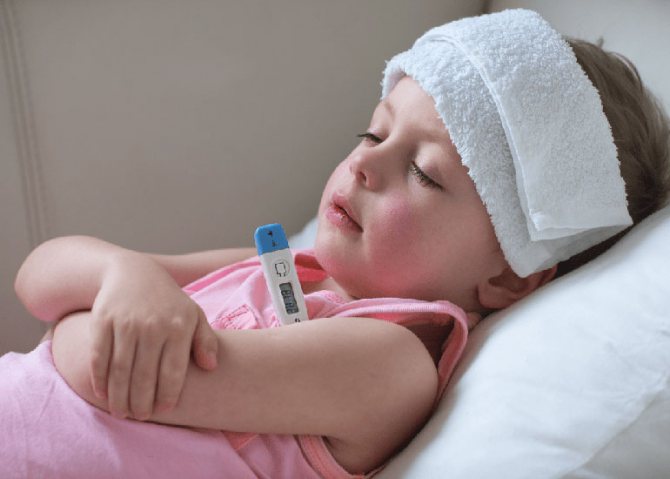
Vomiting of bile in a child often occurs at high temperatures caused by infectious and viral diseases. It is provoked by general intoxication of the body. Sometimes a strong cough with phlegm leads to vomiting. In this case, the underlying disease is treated. To relieve symptoms and stop vomiting, you need to lower your body temperature, drink a lot and lie down. Antipyretics will help, but it is advisable to discuss their use with your doctor.
What should a child not do if he is vomiting bile?
When this happens to children, they are too weak and defenseless to make decisions. Usually the poor things lie down, periodically vomit and follow the instructions of their parents, who should not:
- leaving the child alone;
- give untested medications without a doctor’s prescription;
- refuse hospitalization if emergency doctors recommend doing so;
- forcefully stuff the little victim with food, believing that this will help gain strength;
- scream at the child, blaming him for what happened.
Prevention
To minimize the risk of vomiting bile in a child, you should feed him properly. It is unlikely that it will be possible to ban fast food, because fast food cafes are everywhere, but the consumption of harmful foods should be limited. Personal example is the first step on the path to success.
To avoid emergency conditions that manifest as vomiting of bile, you need to regularly undergo medical examination with your child and not ignore his complaints of abdominal pain. All symptoms should be taken into account and analyzed.
Vomiting with bile is not only dangerous, but also unpleasant, so parents should do everything to prevent this from happening to their child. Seeing a doctor and proper nutrition are two principles that will help reduce the risks of such a symptom and associated pathologies.
Precautionary measures
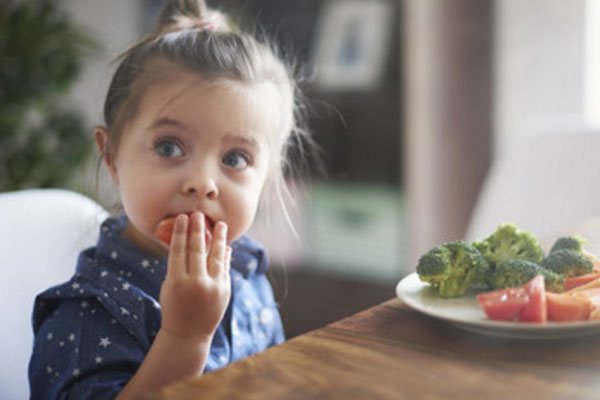
- In order for parents to take care of preventing possible vomiting in their child, special importance must be given to proper nutrition of the toddler.
- You cannot force feed your baby.
- Meals should include only high-quality and fresh foods.
- In the presence of chronic pathologies of the digestive system, in particular, diseases associated with the gallbladder and biliary tract, it is necessary to take medications regularly.
- After the child eats, it is not recommended to get up suddenly or lie down immediately. You need to sit in an upright position for at least half an hour.
- It is important that the last meal occurs no less than three hours before going to bed.
- The baby, as well as the newborn, must be held in an upright position for 20 minutes after feeding.
- It is important to take care of a favorable climate in the family, minimize the impact of stress, and not overstrain the child.
- You need to think about general strengthening activities, hardening procedures, gymnastics, and regular walks in the fresh air.
- It is important to observe the prevention of infectious and viral diseases, in particular, through timely vaccination.
Now you know for what reasons vomiting of bile may occur, and what the treatment may be for this. As you can see, serious health problems are often to blame. Therefore, you should not hesitate, try to do something yourself. It is better to immediately seek help from a specialist rather than waste precious time.
If a child vomits bile, the stomach contents will be yellow or greenish. In parallel with vomiting, the temperature may rise, chills or fever, abdominal pain, and stool with mucous discharge may occur. The condition is caused by both life-threatening causes and simple intolerance to the food eaten. After vomiting bile, it is better to consult a doctor or call him at home (in case of severe condition).
